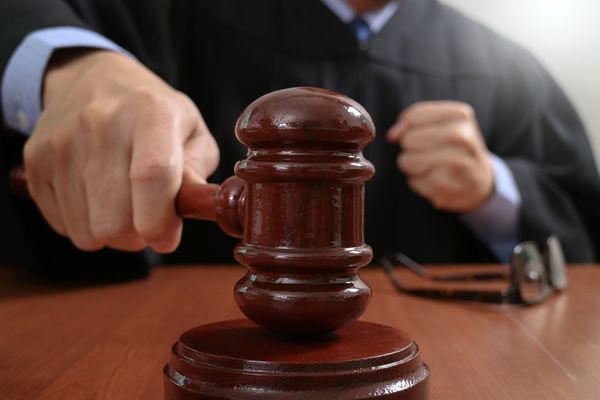3.2.2
The Roles of Yagoda, Yezhov & Beria
Yagoda and Yezhov
Yagoda and Yezhov
Stalin changed the way the secret police operated after securing the leadership of the country. He broadened the definition of 'enemies of the people' to include those within the party.


Stalin's appraoch
Stalin's appraoch
- Genrikh Yagoda and Nikolai Yezhov were crucial players in Stalin's use of terror, as leaders of the secret police.
- This approach included sending enemies to gulags.


Yagoda
Yagoda
- Genrikh Yagoda became the leader of the secret police force in 1934.
- Yagoda worked to use the secret police against certain members of the Party.
- In practice, few members of the Party were purged under Yagoda.
- This led Stalin to look for a replacement for Yagoda.


Yezhov
Yezhov
- Nikolai Yezhov increased the role of terror in the Soviet Union.
- He appointed officers who were happy to use torture.
- He oversaw the secret police during the Great Terror from 1936-8.
- The term 'Yezhovshchina' was used to show that Yezhov's terror was affecting all of Russia.
- 1.5 million people were arrested by the new secret police, the NKVD.
- 680,000 lost their lives.
- 635,000 were deported to the gulags.
Beria and the Show Trials
Beria and the Show Trials
The show trials were the clearest sign that terror was the order of the day. The secret police were heavily involved in removing Stalin's opponents through these trials.


The trials
The trials
- Trial of the 16 (1936): Yagoda coordinated this trial, which led to Zinoviev and his allies' execution.
- Trial of the 17 (1937): Yezhov organised this trial, which removed Trotsky's key allies.
- Trial of the 21 (1938): Beria was now in charge. He used the trial to remove Bukharin and his allies, one of whom was Yagoda.
- Trials were a humiliation tactic before the real punishment.


Beria
Beria
- Beria became head of the secret police at the end of the terror in 1938.
- His role was most important during the Great Patriotic War.
- He organised the deportations and executions of ethnic minority groups, such as the Chechens.
- After the war, he had the job of leading the USSR's attempts to build an atomic bomb.
- They completed this successfully in 1949.
1Communist Government in the USSR, 1917-85
1.1Establishing Communist Party Control, 1917-24
1.2Stalin in Power, 1928-53
1.2.1The Elimination of Opponents
1.2.2The Purges of the 1930s
1.2.3End of Topic Test - The Elimination of Opponents
1.2.4Stalin's Power Over the Communist Party
1.2.5Stalin's Power During & After the Communist Party
1.2.6End of Topic Test - Power Over the Communist Party
1.2.7A-A* (AO3/4) - Stalin in Power
2Industrial & Agricultural Changes
2.1Towards a Command Economy
2.2Industry & Agriculture in the Stalin Era
3Control of the People, 1917-85
3.1Media, Propaganda & Religion
3.2The Secret Police
4Social Developments, 1917-35
4.1Social Security
4.2Women & Family
5Historical Interpretations
5.1What Explains the Fall of the USSR, 1985-91?
5.1.1Economic Weakness
5.1.2Attempts at Economic Reform
5.1.3Failure To Reform The Communist Party & Soviet Gov
5.1.4Impact of Reforms
5.1.5End of Topic Test - Economic Reform
5.1.6Impact of the Nationalist Resurgence
5.1.7Impact of the Nationalist Resurgence 2
5.1.8End of the USSR
5.1.9Gorbachev & Yeltsin's Responsibility
5.1.10End of Topic Test - Nationalist Resurgence
5.1.11A-A* (AO3/4) - Explaining the Fall of the USSR
Jump to other topics
1Communist Government in the USSR, 1917-85
1.1Establishing Communist Party Control, 1917-24
1.2Stalin in Power, 1928-53
1.2.1The Elimination of Opponents
1.2.2The Purges of the 1930s
1.2.3End of Topic Test - The Elimination of Opponents
1.2.4Stalin's Power Over the Communist Party
1.2.5Stalin's Power During & After the Communist Party
1.2.6End of Topic Test - Power Over the Communist Party
1.2.7A-A* (AO3/4) - Stalin in Power
2Industrial & Agricultural Changes
2.1Towards a Command Economy
2.2Industry & Agriculture in the Stalin Era
3Control of the People, 1917-85
3.1Media, Propaganda & Religion
3.2The Secret Police
4Social Developments, 1917-35
4.1Social Security
4.2Women & Family
5Historical Interpretations
5.1What Explains the Fall of the USSR, 1985-91?
5.1.1Economic Weakness
5.1.2Attempts at Economic Reform
5.1.3Failure To Reform The Communist Party & Soviet Gov
5.1.4Impact of Reforms
5.1.5End of Topic Test - Economic Reform
5.1.6Impact of the Nationalist Resurgence
5.1.7Impact of the Nationalist Resurgence 2
5.1.8End of the USSR
5.1.9Gorbachev & Yeltsin's Responsibility
5.1.10End of Topic Test - Nationalist Resurgence
5.1.11A-A* (AO3/4) - Explaining the Fall of the USSR
Unlock your full potential with Seneca Premium
Unlimited access to 10,000+ open-ended exam questions
Mini-mock exams based on your study history
Unlock 800+ premium courses & e-books